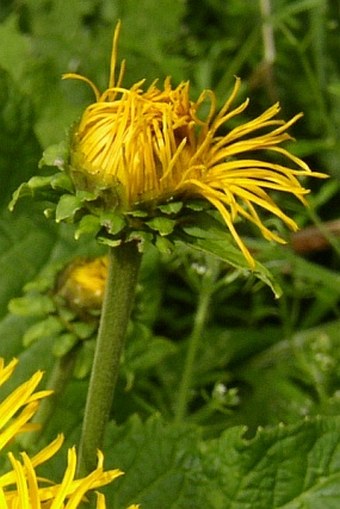Syn.: Buphthalmum speciosum Schreb., Buphthalmum cordifolium Waldst. et Kit., Telekia cordifolia (Waldst. et Kit.) DC.
Family: Asteraceae Bercht. et J. Presl

Distribution: Mountains of southeastern Europe and northern part of Asia Minor, eastward to the Caucasus, northward to eastern Slovakia and Poland. The species is naturalized in central and western Europe (e.g. Czechia, Germany, Austria, Belgium), where it is cultivated for ornament.
Ecology: It grows in sunny meadows and grasslands, around streams and in forest clearings, on roadsides, near human settlements, in old castle gardens. It blooms from June to August.

Description: Perennial herb with a thick rhizome, 70–200 cm tall, somewhat hairy. Stem erect, branched; lower leaves alternate, petiolate, cordate-ovate, 10–40 cm long, coarsely crenate-serrate, glabrous above, pubescent beneath; upper leaves sessile, rounded or broadly cuneate at base. Inflorescence corymbose, with 2–8 heads, capitula 5–9 cm in diameter, involucre c. 15 mm in diameter, involucral bracts in several rows, ovate to ovate-lanceolate, obtuse; ligulate florets in one row, ligules up to 3 cm long, yellow; tubular florets brownish-yellow. The fruit is an achene, c. 6 mm.
Note: The generic name honours the Hungarian traveler S. Teleki-Szég (1845–1916).




These images were taken in Czechia, Silesia, Hrubý Jeseník (September 4, 2003) and Bohemia, Slavkovský les (July 1, 2007).


